- Premium features included
- No hidden costs or usage limits
- Scale from startup to enterprise

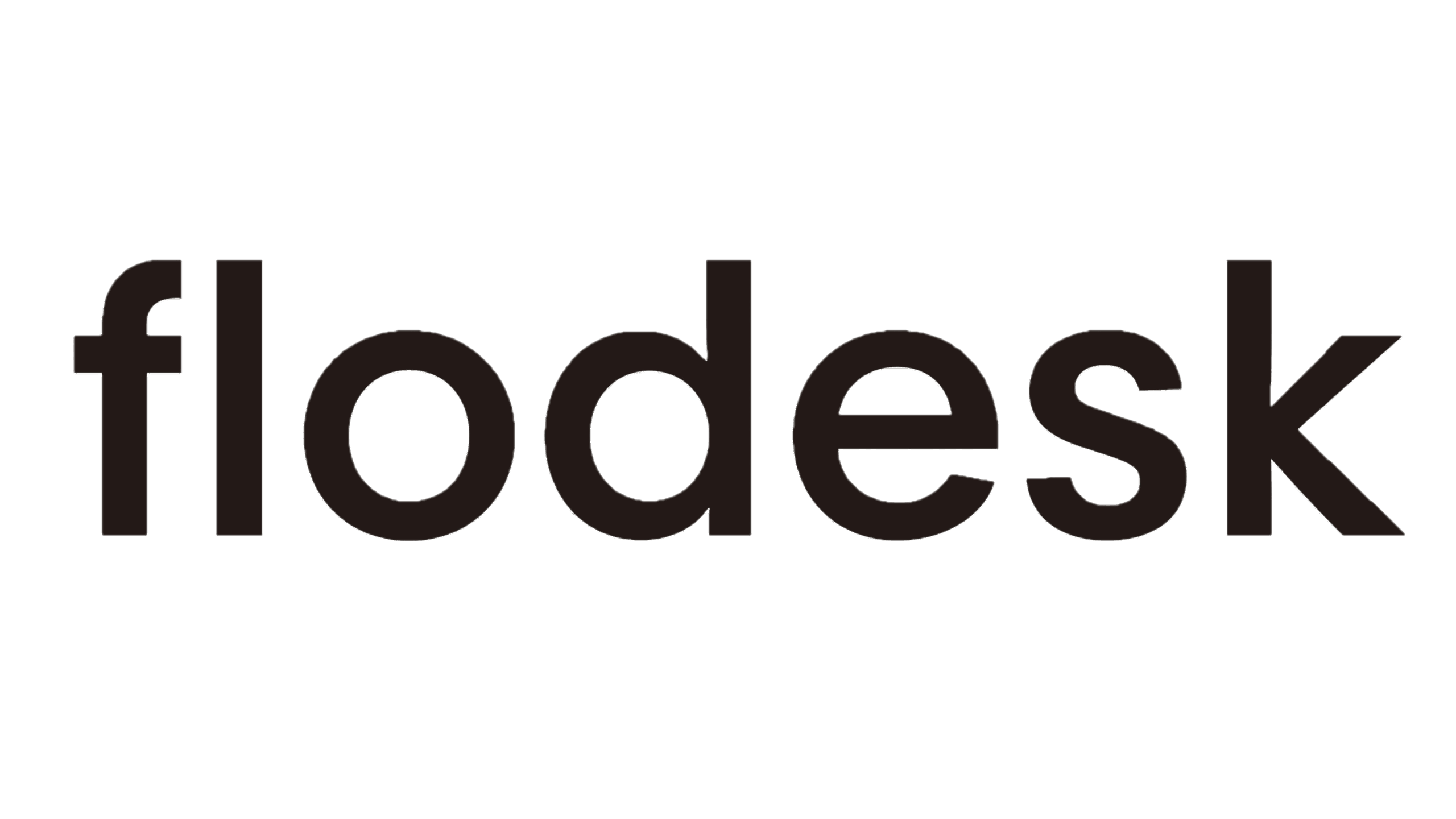
Flodesk landed on my radar a few years back when I kept seeing these gorgeous newsletters in my inbox. You know the ones—they actually look good instead of like they were slapped together in 1999. Turns out, many of them were built with Flodesk.
This email platform has a simple promise: beautiful emails without the headache. No overwhelming dashboard with fifty features you’ll never touch.
Picture this: you’re tired of email platforms that either look terrible or cost a fortune as your audience grows. Flodesk sits right in that sweet spot where design meets sanity. Founded in 2018 by Martha Bitar, Rebecca Shostak, and Trong Dong, it emerged from their frustration with existing tools that were either ugly, expensive, or impossibly complex.
What makes it different isn’t rocket science. Every email automatically works on mobile. The drag-and-drop builder actually makes sense. Templates don’t look like they’re from 2003. It’s email marketing for people who care what their emails look like but don’t want to become part-time developers to make it happen.
Building emails in Flodesk feels more like playing with digital building blocks than wrestling with code. The drag-and-drop editor is genuinely intuitive—you can literally see what you’re building as you build it. No mysterious preview buttons or surprise mobile disasters.
Here’s what caught my attention: users consistently report open rates in the 25-35% range. Industry average hovers around 18-20%. That’s not luck—people actually want to open pretty emails. The templates come with smart layouts that don’t break when you customize them, which is rarer than it should be.
The campaign process goes like this: pick a template, swap in your content, adjust colors to match your brand, hit send. You can add countdown timers for urgency, embed videos, or throw in custom graphics. All without touching a line of code or hiring a designer.
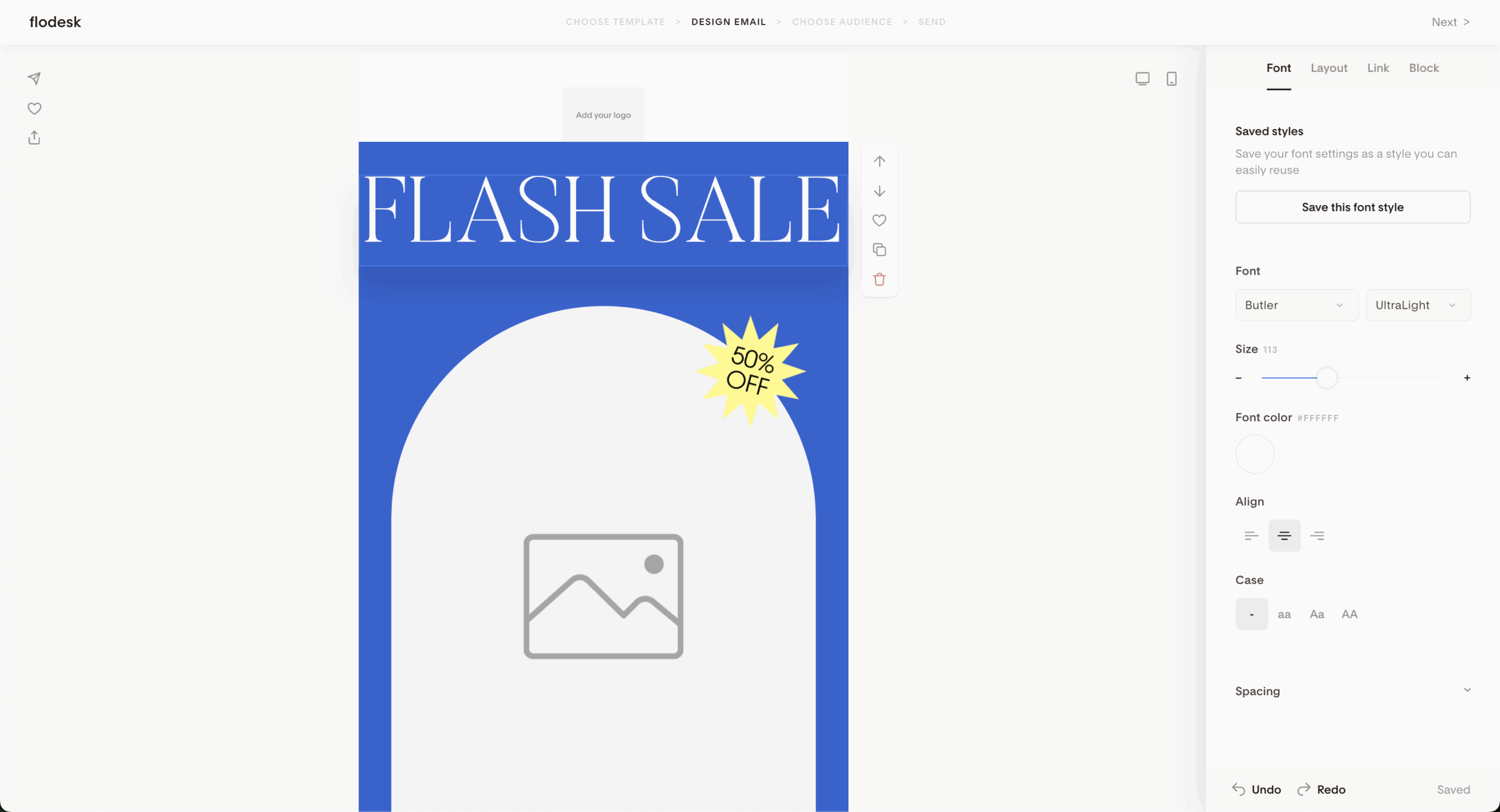
This is where Flodesk really shines. Their template library doesn’t mess around—over 60 designs that actually look professional straight out of the box. No “we’ll give you a basic shell and you figure out the rest” nonsense.
Each template handles customization gracefully. Upload your fonts, change colors, rearrange sections—the design holds together instead of falling apart like a house of cards. That’s thanks to their layout technology, which sounds fancy but basically means your emails won’t look broken when you make them your own.
The templates cover real business needs too. Product launches, newsletters, event announcements, sales emails. Not just generic “business template #47.” They’ve clearly thought about what people actually need to send.
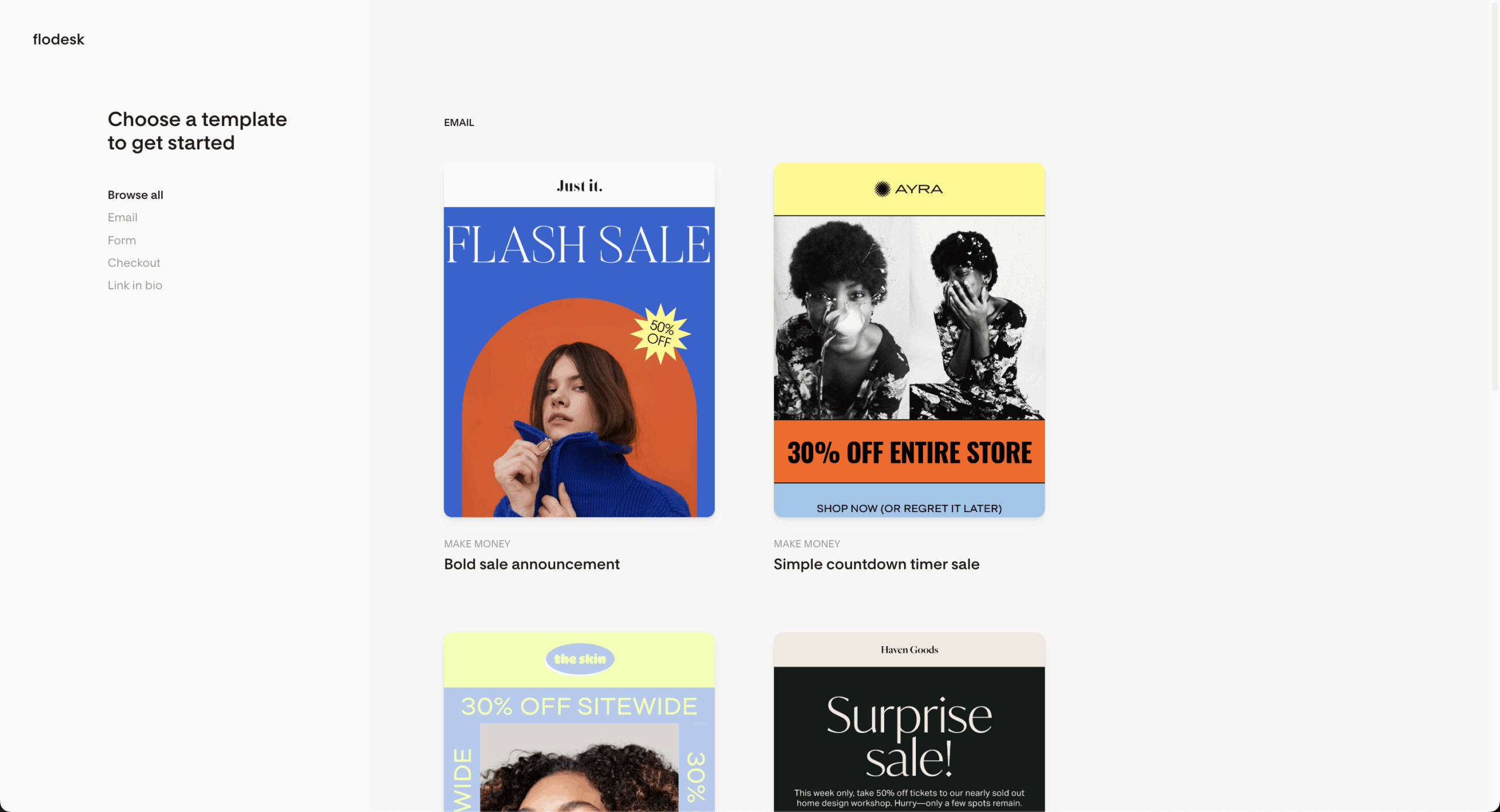
Flodesk’s email automation keeps things simple. No branching workflows that require a PhD to understand. You can set up welcome sequences, deliver lead magnets automatically, and create basic nurture campaigns that run themselves.
The visual workflow builder shows you exactly what happens when. Someone joins your list? They get email 1 today, email 2 in three days, email 3 a week later. It’s automation that makes sense, not the kind that needs a manual to operate.
Sure, it’s not as complex as platforms like ActiveCampaign. But honestly? Most small businesses don’t need seventeen different trigger conditions and behavioral scoring. They need emails that go out when they’re supposed to, to the right people, without requiring a computer science degree.
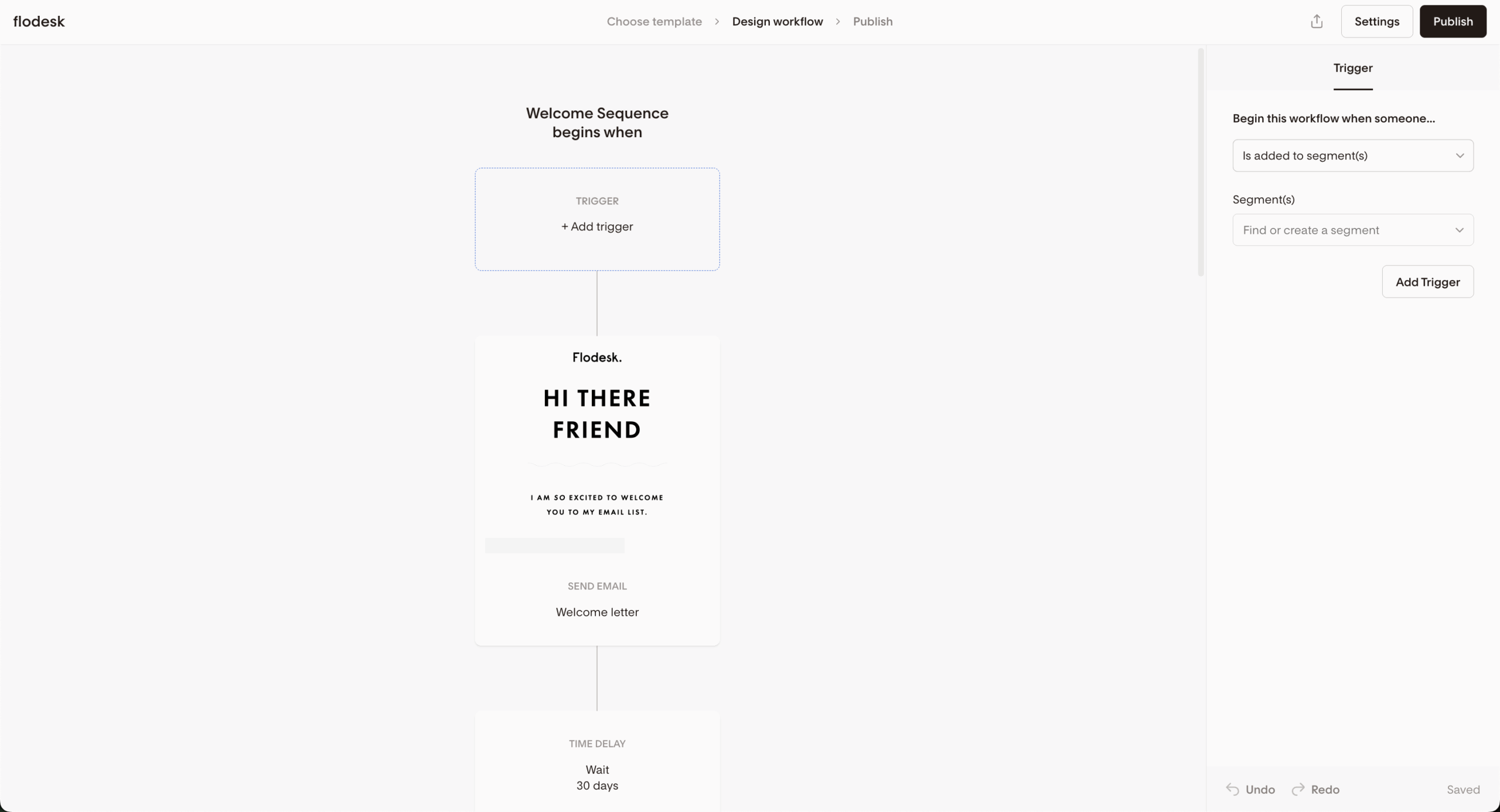
Managing your list in Flodesk revolves around tags and segments that actually work. You can organize people by how they joined, what they’re interested in, or how engaged they are. The system handles the technical stuff—bounced emails, unsubscribes, spam complaints—without you having to babysit it.
Individual subscriber tracking lets you see who’s opening what and when. You can even add private notes to people’s profiles, which is handy if you’re using this as a lightweight CRM. Nothing fancy, but it covers what most businesses need.
The segmentation isn’t as detailed as enterprise platforms, but it gets the job done. You can target your most engaged subscribers with special offers or re-engage people who haven’t opened emails lately. Simple, effective, no overcomplicated rules.
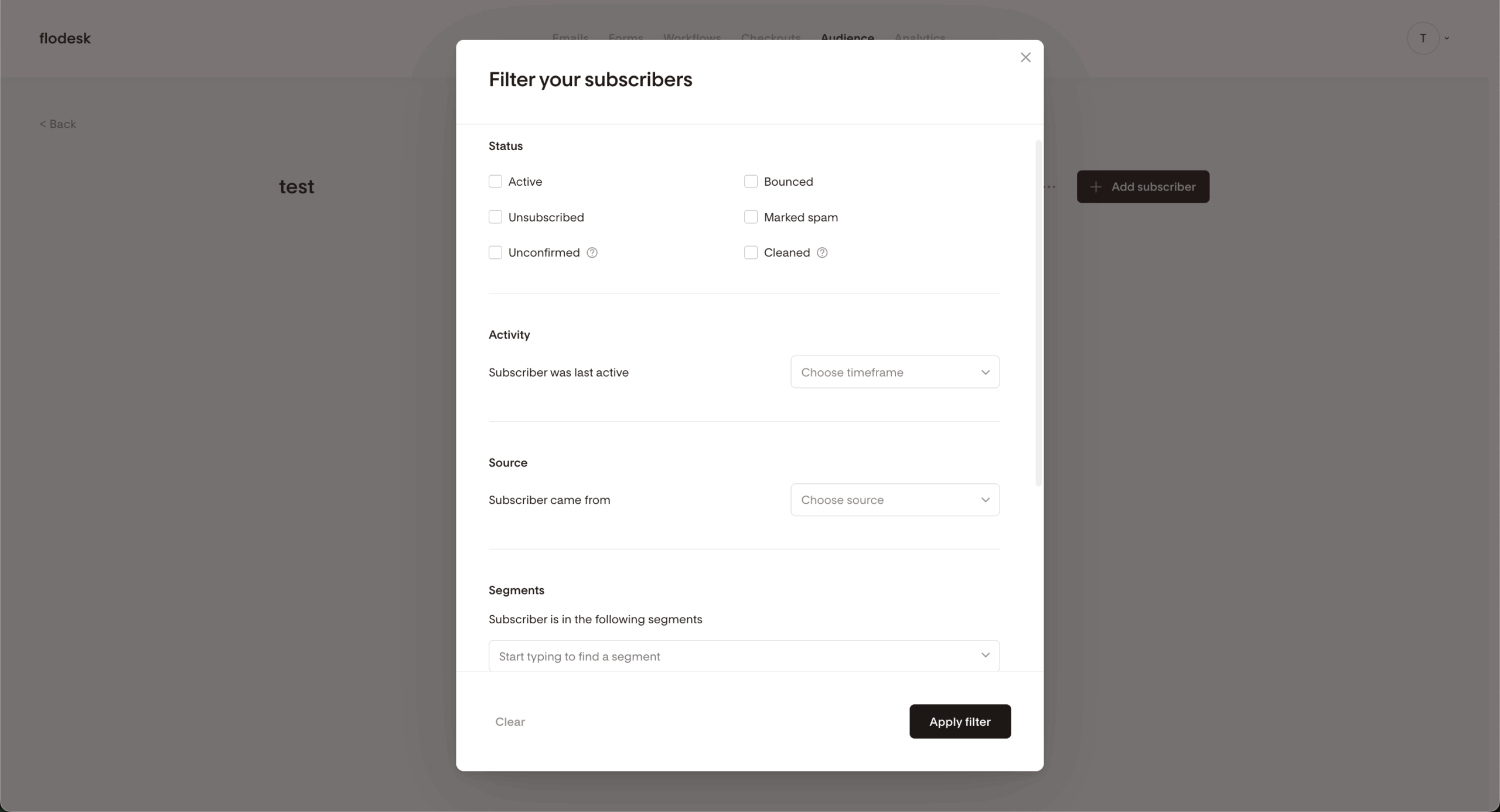
No website? No problem. Flodesk’s landing page builder lets you create standalone pages for lead magnets, product launches, or simple opt-ins. The forms work as embeds on your site, pop-ups, or full landing pages—whatever fits your setup.
Form customization includes different field types and basic conditional logic. Everything connects seamlessly—someone fills out a form, they automatically join the right segment and trigger your welcome sequence. No manual list management or broken connections.
This is particularly useful for testing different lead magnets without building separate website pages for each one. Create a landing page, drive traffic to it, see what converts. Simple testing without the technical overhead.
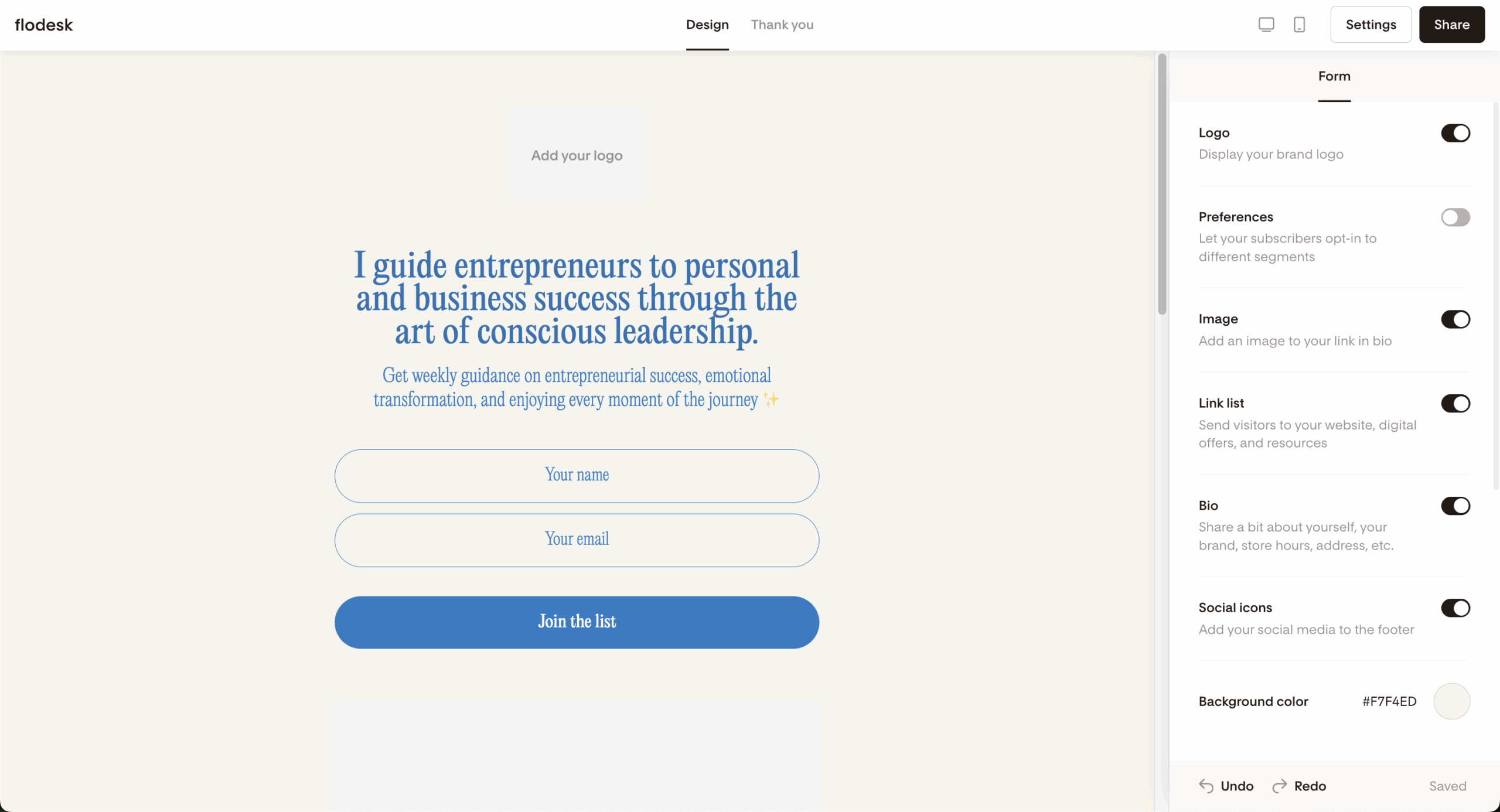
Flodesk’s analytics focus on the metrics that actually matter. Open rates, click rates, subscriber growth, engagement patterns. Presented in clean charts that don’t require a statistics background to understand.
Individual subscriber analytics show you who’s engaged and who’s not. You can see device preferences, engagement history, and overall patterns. The reporting isn’t as deep as Klaviyo or HubSpot, but it tells you what you need to know without drowning you in data.
The visual presentation makes the numbers accessible. Bar charts show email performance at a glance. Engagement trends help you spot what content resonates with your audience. It’s analytics for normal humans, not data scientists.
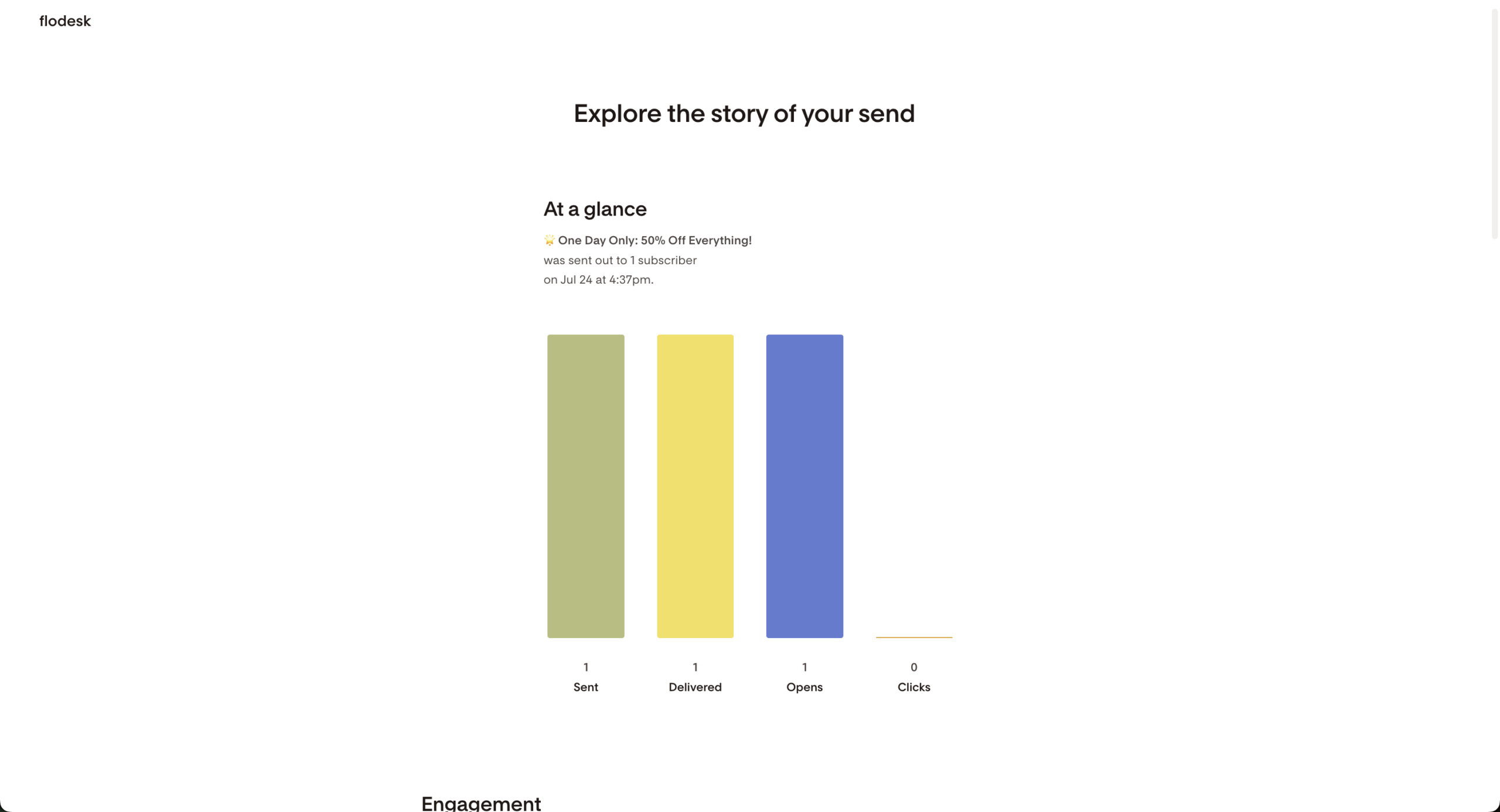
Flodesk connects with the tools most businesses actually use. Shopify for e-commerce, Stripe for payments, WordPress for websites. Plus Zapier access to thousands of other apps if you need something specific.
The integration list is smaller than established platforms, but it covers the essentials. Quality over quantity—the connections that exist work reliably instead of having hundreds of half-broken integrations.
Their API lets developers build custom connections for unique business needs. Most users won’t touch this, but it’s there if your business has specific requirements that standard integrations don’t cover.
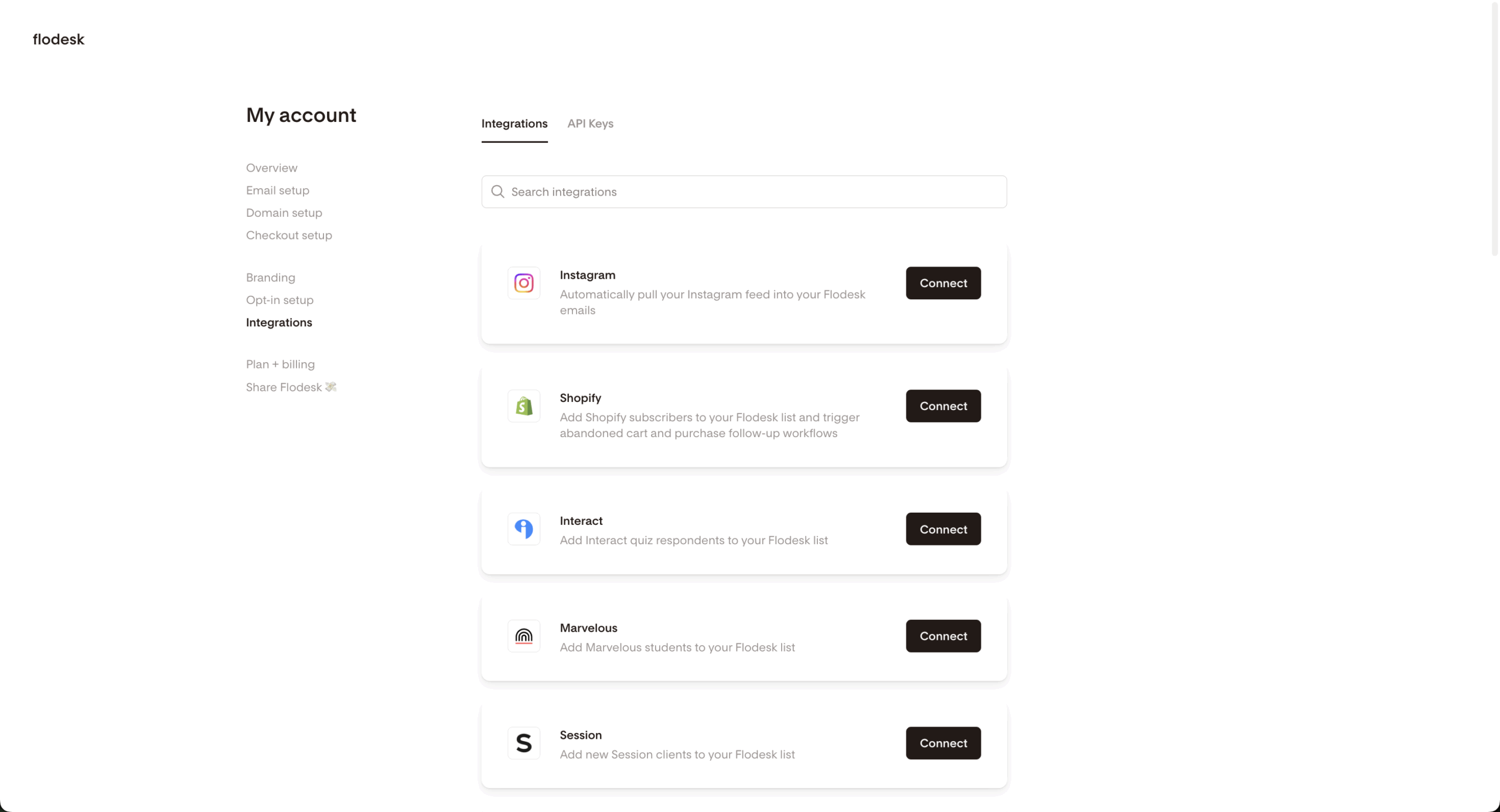
Support comes through email with actual humans who know the platform. Response times typically hit 24-48 hours with detailed, helpful answers. No chatbots reading from scripts—real people who understand email marketing.
Flodesk University provides comprehensive training through video tutorials and step-by-step guides. Everything from basic setup to advanced strategy. The content is genuinely useful, not just marketing fluff disguised as education.
The help center covers common questions and troubleshooting. There’s also a Facebook community for user-to-user support and networking. While there’s no live chat or phone support, the quality of email support and educational resources fills most gaps.
Price
Key Features
Best For
Free
$0/month
Forms, landing pages, link-in-bio tool, analytics
Lead capture without email marketing
Lite
Starts at $19/month
1,000 subscribers, unlimited emails, templates, analytics
Most businesses and creators
Professional
Starts $25/month
Everything in Lite + unlimited workflows, no branding
Businesses selling digital products
The Professional plan handles most business needs. Unlimited emails, all templates, automation, analytics. No subscriber limits, no sending caps, no surprise charges when your list doubles. The math gets better as you grow—something most email platforms can’t claim.
There is also an Everything plan that starts at $49/month. It provides everything that the Professional plan does, plus unlimited integrated checkouts, sales pages & funnels, subscriptions & payment plans, and abandoned cart automations. Just don’t forget that the $49 still applies only to 1,000 subscribers.
The templates really are that good. This isn’t marketing hype—users consistently report higher open rates after switching, partly because people actually want to open attractive emails. When your newsletter looks professional, people treat it professionally.
The platform nails the simplicity-without-dumbing-down balance. New users get up and running quickly, but experienced marketers find enough functionality to execute sophisticated campaigns. That’s harder to achieve than it sounds.
Automation features lag behind specialized platforms. If you need complex behavioral triggers or intricate branching workflows, you’ll hit Flodesk’s limits quickly. The automation works well for straightforward sequences but can’t match dedicated marketing automation tools.
No built-in A/B testing frustrates optimization-focused marketers. You can manually test different approaches across separate campaigns, but that’s clunky compared to platforms with split-testing built in. This feels like a missing piece for data-driven users.
Integration options remain limited compared to established competitors. While Zapier expands possibilities, native connections are fewer than platforms like Mailchimp or HubSpot. This might mean extra setup work or workflow limitations for businesses using specialized tools.
Flodesk is Perfect For
Who Should Consider an Alternative
Small businesses and entrepreneurs prioritizing design
Large enterprises needing complex automation
Content creators and influencers building personal brands
Ecommerce stores requiring advanced sales features
Service-based businesses wanting professional appearance
Businesses heavily dependent on A/B testing
Users who prefer simplicity over complexity
Teams needing extensive third-party integrations
Organizations requiring enterprise-level reporting
Creative professionals love this platform because their emails can finally match the quality of their work. Photographers, designers, coaches—anyone whose brand depends on visual appeal finds Flodesk’s templates align with their aesthetic standards instead of fighting against them.
Busy entrepreneurs appreciate the simplicity that actually works. No decision paralysis from endless features. No complex setup requirements. Build beautiful emails, send them to your list, track what happens. Simple email marketing that doesn’t require a marketing degree.
Large enterprises with complex needs will outgrow Flodesk’s capabilities quickly. If you need sophisticated lead scoring, complex automation workflows, or detailed behavioral tracking, platforms like HubSpot or Pardot make more sense despite higher costs.
Ecommerce businesses might find the basic checkout functionality limiting. While Flodesk handles simple digital product sales, complex inventory management or advanced abandoned cart recovery requires more specialized ecommerce platforms like Klaviyo.
Data-driven marketers who live and breathe A/B testing will feel constrained. If optimization through testing drives your strategy, platforms with built-in split-testing and detailed analytics provide better tools for continuous improvement.
Users consistently praise the design capabilities and ease of use. The common thread? People see improved open rates after switching, often dramatically. The drag-and-drop builder gets frequent mentions for actually being intuitive instead of promising to be.
Criticism centers on limited customization depth and basic automation features. Some users want more control over template modifications or complex workflow capabilities. But most acknowledge the trade-off—simplicity that works versus complexity that overwhelms.
The deliverability praise appears in nearly every review. Users report emails landing in inboxes instead of spam folders, which matters more than any fancy feature. When your emails don’t get delivered, nothing else matters.
While it still used flat-rate pricing, it received overwhelmingly positive feedback. User after user mentions cost savings compared to previous platforms, especially as lists grow.
Customer support quality gets frequent mentions. Users appreciate getting actual help instead of automated responses or endless ticket escalations. The response time consistency and solution quality build user confidence in the platform.
Compliance process delays appear as the main complaint. Some users report waiting longer than expected for subscriber list approvals from Flodesk’s compliance team. It’s a minor frustration that doesn’t seem to affect overall satisfaction significantly.
Customer service excellence stands out across Trustpilot reviews. Users frequently mention specific support interactions where team members went above and beyond to solve problems or explain features. This level of service builds platform loyalty.
Business impact stories dominate positive reviews. Nonprofit organizations, small businesses, and individual creators share specific improvements in engagement, open rates, and professional appearance after switching to Flodesk.
Reliability and deliverability get consistent praise. Users report stable platform performance and consistent inbox delivery rates. For email marketing, reliability isn’t exciting—but it’s absolutely essential.
Flodesk emphasizes design and simplicity while Sender focuses on affordability and feature density. Sender offers a generous free plan—15,000 emails monthly for 2,500 subscribers—compared to Flodesk’s free plan that doesn’t include email marketing at all.
Template quality heavily favors Flodesk. Sender’s templates work fine but lack the visual polish that makes Flodesk emails stand out. However, Sender includes A/B testing, detailed analytics, and SMS marketing integration that Flodesk doesn’t offer.
Mailchimp offers more comprehensive features but complicates everything in the process. Mailchimp’s free plan includes email marketing for 500 subscribers, while Flodesk requires paid plans for any email functionality. But Mailchimp’s pricing escalates quickly—often hitting $45+ monthly for 2,500 subscribers.
Design quality isn’t even close. Mailchimp’s templates often look dated and require significant work to appear professional. Flodesk templates are immediately usable and visually appealing without customization, though they certainly allow it.
User experience philosophies differ completely. Flodesk prioritizes simplicity and visual appeal—perfect for beginners and design-conscious users. Mailchimp offers more functionality but can overwhelm new users with options and complexity that many businesses never need.
Kit targets content creators with powerful automation and built-in monetization features. Kit offers a free plan for 1,000 subscribers and includes sophisticated automation with visual workflow builders and advanced tagging systems.
Design quality clearly favors Flodesk—Kit templates are basic and text-focused by design. But Kit provides superior automation capabilities, including complex behavioral triggers and detailed subscriber management that appeals to serious content marketers.
Flodesk succeeds by focusing on what actually matters to most small businesses: beautiful emails and simplicity that works. It’s not trying to be everything to everyone—just the best solution for businesses that want professional email marketing without the complexity or cost escalation.
This isn’t the right tool for everyone. Large enterprises, complex ecommerce operations, or businesses requiring advanced automation should look elsewhere. But for the target audience—small to medium businesses prioritizing design, simplicity, and cost predictability—Flodesk delivers exactly what it promises.
The platform continues evolving by adding features like checkout functionality and improved analytics while maintaining its core philosophy. If beautiful, simple email marketing sounds better than feature-packed complexity, Flodesk probably fits your business better than you’d expect.
